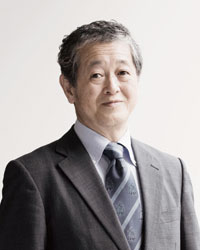Enabling Technology Project
E4 Innovative Light-Weight Materials for the Forward Energy-Saving Society
Outline of the area

Kohmei Halada
Emeritus Researcher,
National Institute for
Materials Science
Under the globalization trend of the economy, transporting equipment has started to occupy a larger position. A weight saving design for components such as pistons and the like can largely improve the energy efficiency, and also contribute to the reduction of CO2 emission, as well as reduce the weight of the mobile body in automobiles and aircrafts etc. The largest factor resulting in such a weight saving design is to employ a light-weight material. However, many of materials which are expected to be lightweight material have a relatively short history, and such material is greatly inferior to conventional material, in a comprehensive view not only of properties under a severe use environment as the mobile body and the driving portion, but also of those including cost performance and workability.
Focusing on the technological bottlenecks for the development of the future lightweight material, this present project is aiming at disseminating the developed lightweight material and greatly contributing to the reduction of CO2 emission caused by the use of products and elucidating the technology basis for problem solution. More specifically, the project encompasses strong and ductile Mg alloys compatible for Al; a new smelting process of Ti which is expensive because of its refi ning process cost while largely surpassing the specific strength and the corrosion resistance of steel; and a self-healing function for fracture-crack propagation which is unavoidable for ceramic material. In order to make the paths to solutions clear and socially implement the light-weight material and its manufacturing technology around 2030, we promote the research and development for creating their basis, while strengthening the partnership with the industry.




